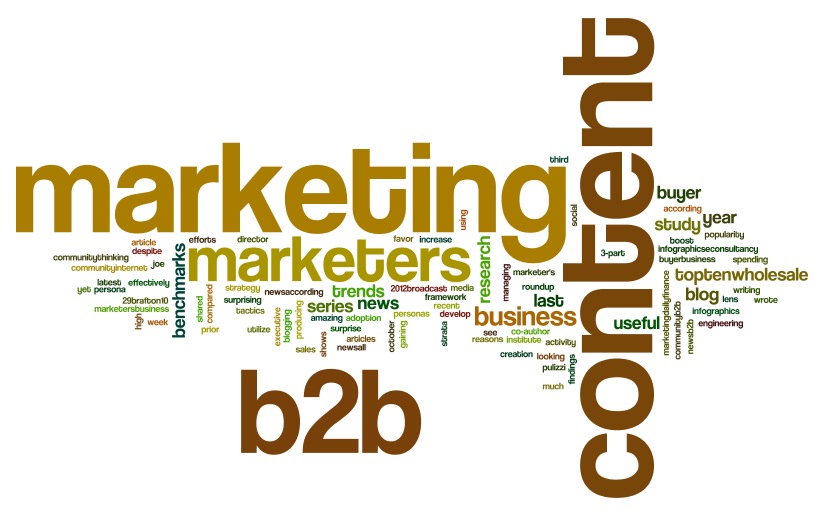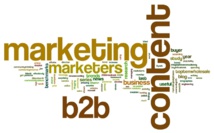The strategist.media – 26 May 2015 – According to recent research, customer administration sites can help B2B firms hold their expenses down, however they must put resources into customary hotlines and technical support to fulfill their neediest customers.
These fresher methods of client administration have been contemplated in the business-to-purchaser (B2C) model; nonetheless, there has been startlingly little research done on their significance in the business-to-business (B2B) domain. That is especially astounding given that holding and supporting business customers (particularly the most profitable ones) is generally more essential for firms' development and benefit than their B2C administration.
As per Matt Palmquist, B2B customers aren't hoping to make companions with other Internet clients or talk up a brand's notoriety; they essentially need to get answers for their issues as quick as could reasonably be expected. What's more, organizations are significantly more prone to make enormous buys than the normal purchaser, which builds the requirement for B2B firms to react proficiently to customers' issues.
As of late, numerous organizations have set up their own particular shared critical thinking (P3) groups and gatherings, planning to urge B2B customers to cooperate and bolster each other, with the intermittent poke from pros utilized by the firm. Organizations, for example, Apple, Dell, HP, Intel, Microsoft, Oracle, and Sprint have directed prospering P3 entryways for B2B customers, which pull in countless technical support asks for every day.
Cisco even gives P3 individuals open access to its learning system, uniting clients and representatives to trade data about existing and approaching items. In these situations, customers wind up assuming control a hefty portion of the obligations that were generally taken care of by the client administration office — in a perfect world lessening corporate expenses and co-making information simultaneously.
Yet, setting up and keeping up these destinations isn't simple or shabby. So to be justified regardless of the exertion, they must be compelling at fulfilling B2B clients' solicitations and eliminating conventional client bolster administrations. What's more, as indicated by another study by Utah State University's Sterling Bone and his associates, customers' interest in these groups does surely decrease a company's dependence on obsolete client administration — the length of clients don't turn out to be so dependent on help that they likewise overwhelm customary channels with their requirement for exhortation.
To focus the effect of P3 groups on customary B2B client benefits, the creators cooperated with a Fortune 100 firm that works in big business programming. The organization brags a mixture of client bolster instruments, including customary call focuses, one-on-one Web specialists, and more than 200 P3 gateways gave to particular items and administrations. More than four months, Bone et al. broke down information from more than 2,500 customers, speaking to an assorted arrangement of businesses, who took an interest in the organization's worldwide P3 group.
In the wake of controlling for customers' past utilization of conventional client administration exchanges and their late involvement in the online group, the creators found that clients who helped themselves (by posting inquiries) and helped others (by reacting to their questions) on P3 discussions were less inclined to swing to customary client bolster outlets. Clients who looked gathering strings for beforehand posted data additionally put less telephone calls and reached the company's Web specialists less regularly.
However, organizations shouldn't urge their customers to be excessively dynamic on their shared message sheets. Clients who needed a considerable number P3 groups and signed in with awesome recurrence additionally inclined toward customary client administration outlets substantially more than different clients, the creators found. This varies from the examples of the B2C online bolster group, which appears to be better ready to substitute clients' ability for corporate help — apparently due to the quality that purchasers remove from their social collaboration.
The trap for chiefs, then, is by all accounts making an equalization for their clients — creating and directing P3 frameworks that can deal with the vital issues confronted by customers without permitting them to end up so subject to outside help that they overtask call focuses or Web-based bolster staff if their online inquiries to associates can't be replied.
To make such an equalization, supervisors of B2B organizations ought to attempt to encourage firm-facilitated groups that cause direct clients to arrangements as fast as could be expected under the circumstances and not lead them to sign in over and over again. By understanding what each P3 group needs, administrators can gather a comprehension of which sorts of communications decrease customers' requirements for formal client administration channels.
They can likewise order learning databases that decrease the requirement for buyers to interface straightforwardly with the organization. Also, chiefs ought to give careful consideration to "super clients." In the example mulled over, these specialists represented just 1 to 2 percent of group individuals yet presented around 40 on 60 percent of the substance.
References:
http://www.strategy-business.com/blog/In-Customer-Service-In-with-the-New-Doesnt-Mean-Out-with-the-Old?gko=6e5f0
These fresher methods of client administration have been contemplated in the business-to-purchaser (B2C) model; nonetheless, there has been startlingly little research done on their significance in the business-to-business (B2B) domain. That is especially astounding given that holding and supporting business customers (particularly the most profitable ones) is generally more essential for firms' development and benefit than their B2C administration.
As per Matt Palmquist, B2B customers aren't hoping to make companions with other Internet clients or talk up a brand's notoriety; they essentially need to get answers for their issues as quick as could reasonably be expected. What's more, organizations are significantly more prone to make enormous buys than the normal purchaser, which builds the requirement for B2B firms to react proficiently to customers' issues.
As of late, numerous organizations have set up their own particular shared critical thinking (P3) groups and gatherings, planning to urge B2B customers to cooperate and bolster each other, with the intermittent poke from pros utilized by the firm. Organizations, for example, Apple, Dell, HP, Intel, Microsoft, Oracle, and Sprint have directed prospering P3 entryways for B2B customers, which pull in countless technical support asks for every day.
Cisco even gives P3 individuals open access to its learning system, uniting clients and representatives to trade data about existing and approaching items. In these situations, customers wind up assuming control a hefty portion of the obligations that were generally taken care of by the client administration office — in a perfect world lessening corporate expenses and co-making information simultaneously.
Yet, setting up and keeping up these destinations isn't simple or shabby. So to be justified regardless of the exertion, they must be compelling at fulfilling B2B clients' solicitations and eliminating conventional client bolster administrations. What's more, as indicated by another study by Utah State University's Sterling Bone and his associates, customers' interest in these groups does surely decrease a company's dependence on obsolete client administration — the length of clients don't turn out to be so dependent on help that they likewise overwhelm customary channels with their requirement for exhortation.
To focus the effect of P3 groups on customary B2B client benefits, the creators cooperated with a Fortune 100 firm that works in big business programming. The organization brags a mixture of client bolster instruments, including customary call focuses, one-on-one Web specialists, and more than 200 P3 gateways gave to particular items and administrations. More than four months, Bone et al. broke down information from more than 2,500 customers, speaking to an assorted arrangement of businesses, who took an interest in the organization's worldwide P3 group.
In the wake of controlling for customers' past utilization of conventional client administration exchanges and their late involvement in the online group, the creators found that clients who helped themselves (by posting inquiries) and helped others (by reacting to their questions) on P3 discussions were less inclined to swing to customary client bolster outlets. Clients who looked gathering strings for beforehand posted data additionally put less telephone calls and reached the company's Web specialists less regularly.
However, organizations shouldn't urge their customers to be excessively dynamic on their shared message sheets. Clients who needed a considerable number P3 groups and signed in with awesome recurrence additionally inclined toward customary client administration outlets substantially more than different clients, the creators found. This varies from the examples of the B2C online bolster group, which appears to be better ready to substitute clients' ability for corporate help — apparently due to the quality that purchasers remove from their social collaboration.
The trap for chiefs, then, is by all accounts making an equalization for their clients — creating and directing P3 frameworks that can deal with the vital issues confronted by customers without permitting them to end up so subject to outside help that they overtask call focuses or Web-based bolster staff if their online inquiries to associates can't be replied.
To make such an equalization, supervisors of B2B organizations ought to attempt to encourage firm-facilitated groups that cause direct clients to arrangements as fast as could be expected under the circumstances and not lead them to sign in over and over again. By understanding what each P3 group needs, administrators can gather a comprehension of which sorts of communications decrease customers' requirements for formal client administration channels.
They can likewise order learning databases that decrease the requirement for buyers to interface straightforwardly with the organization. Also, chiefs ought to give careful consideration to "super clients." In the example mulled over, these specialists represented just 1 to 2 percent of group individuals yet presented around 40 on 60 percent of the substance.
References:
http://www.strategy-business.com/blog/In-Customer-Service-In-with-the-New-Doesnt-Mean-Out-with-the-Old?gko=6e5f0



















